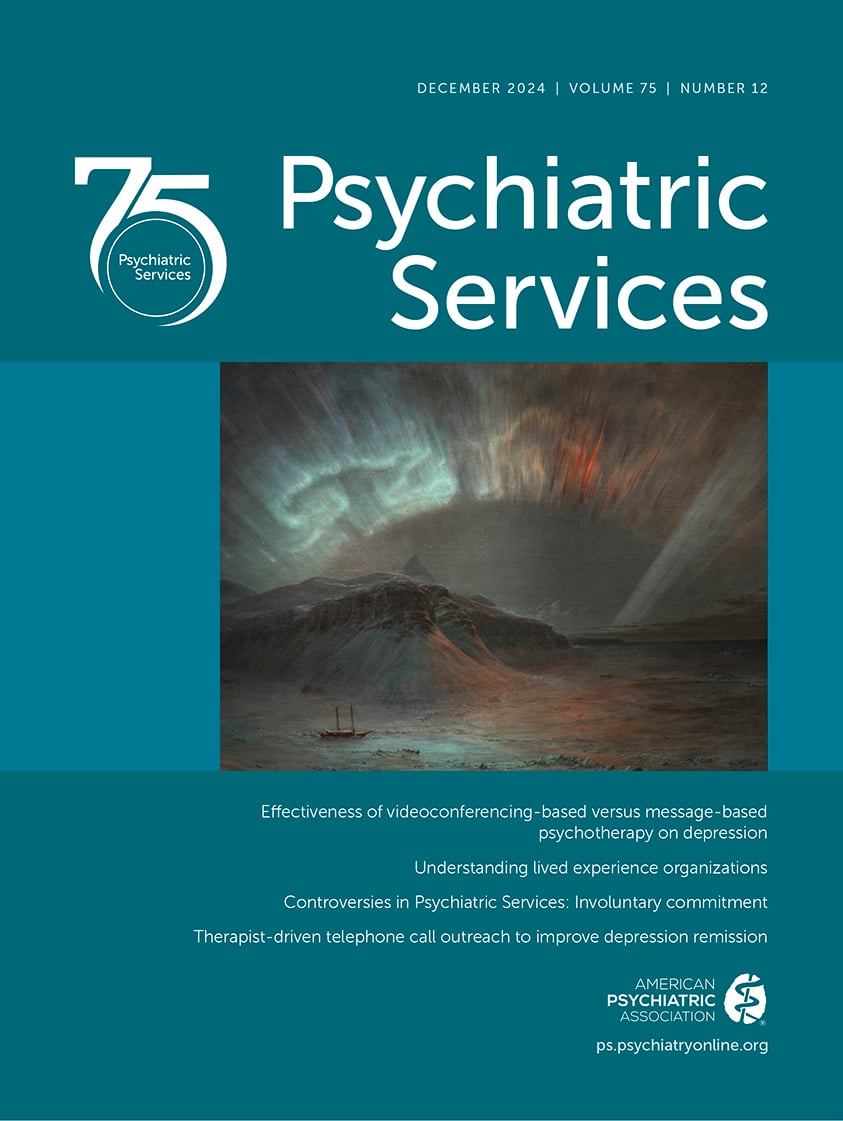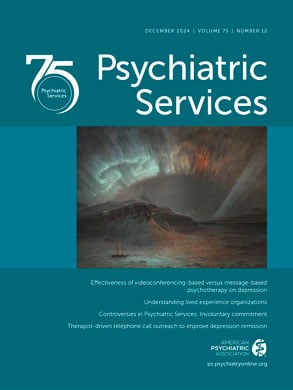The civil commitment of individuals with substance use disorders (with or without co-occurring mental illness) has uncertain benefit, but legislation permitting this practice continues to proliferate. A recent review (
1) indicated that 37 states plus the District of Columbia had such legislation. More recently (October 2023), California passed Senate Bill 43 (
2), which enables its existing mental health commitment legislation (that allows short-term holds, 14-day treatment, and even conservatorship) to be applied to individuals with substance use disorder alone. Counties have been given up to 2 years to implement this law. Whether or not this legislation is a good idea, it has already passed. The question instead is, Is there a way to implement legislation of this kind—in California or elsewhere—that maximizes benefit and minimizes harm?
The moral argument for such legislation is powerful. Consider the common situation in which an individual with severe opioid use disorder overdoses and, once revived with naloxone by first responders, immediately wants to use opioids again. Families and first responders alike are often overwhelmed with frustration and helplessness.
Similar concerns arise for individuals with other severe substance use disorders, whose brains have been so affected by the disease of addiction that they clearly are unable to protect themselves from harm. Examples include unsheltered individuals with severe alcohol use disorder and general medical conditions and persons addicted to methamphetamine whose health and cognition have deteriorated.
Implementation of civil commitment for people with substance use disorder in the United States has historically been characterized by considerable ambivalence and inconsistency, both in legislation and in clinical practice. A formal review of state legislation in 2010–2012 indicated that of 33 states with such legislation, substance-related civil commitment laws were applied rarely or never in 13 of them; of the rest, only two states’ laws (Massachusetts’ Section 35 and Florida’s Marchman Act) were applied relatively frequently (
3).
Further, the limited available data on the effectiveness of civil commitment of people with substance use disorder often do not show favorable results. Consequently, these data also do not provide guidance for how civil commitment could be implemented successfully in practice.
A review of research by the Harm Reduction Research and Treatment Center at the University of Washington (
4) revealed that involuntary or coerced treatment is inconsistently defined, resulting in great variability in the length and content of the interventions that are provided. Evans et al. (
5) noted that patients often experience involuntary treatment as punitive and inadequate and that involuntarily committed patients lack access to evidence-based medication treatments and continuing care support. In a review of outcomes, Jain et al. (
6) observed
Commitment may achieve the immediate goal of preventing an overdose or related danger, but whether it leads to sustained recognition of treatment needs by the affected person, engagement in care, and improved decision making remains to be demonstrated. . . . At the same time, there is concern that civil commitment could lead to unintended harms. For instance, if transition to post-commitment community care falters, newly discharged patients may be at elevated risk for overdose.
Despite persistent advocacy (
1), therefore, most experts addressing this controversy—including those at the Harm Reduction and Research Treatment Center—have strongly recommended that involuntary commitment legislation for substance use disorder not be implemented without well-considered data-informed guidelines (
4).
Nonetheless, despite continuing uncertainty about the ultimate effectiveness of involuntary commitment to care, for people with mental illness, involuntary commitment continues to be implemented. Further, as noted earlier, states are indeed implementing involuntary civil commitment of people with a substance use disorder. Given this practice, even without a thorough research base on involuntary commitment for substance use disorder, leaders and experts in the addiction treatment field should propose well-considered guidelines for how to apply this intervention wisely while studying its positive and negative effects.
These guidelines could begin with targeting specific populations and carefully delineating commitment criteria, length of commitment, types of settings, and appropriate interventions and outcomes. For example, just as the basis for imposing involuntary commitment for suicidality is limited to the immediate prevention of suicide rather than recovery from an unhappy life, involuntary commitment for opioid use disorder can similarly target harm reduction and overdose prevention as goals rather than necessarily serving as the formal commencement of long-term recovery from opioid use disorder. Implementation guidelines need to address these considerations.
People should not be confined in restrictive settings that do not offer hope of recovery and provide effective treatment (including medication) for addiction. Further, treatment should start with less intrusive interventions that have a higher likelihood of success and can then be expanded as the knowledge base grows. One time-limited episode of treatment should not be expected to result in enduring abstinence or even stability. Addiction is a chronic disease, and ongoing interventions are needed to promote recovery. Reduction of harm (e.g., overdose prevention) may be a more achievable goal for people who are involuntarily committed.
A reasonable starting place would be to target high-risk subpopulations, such as people with opioid use disorder at risk for death. This approach makes sense given the severity of risk associated with the opioid overdose epidemic, the inability of many people with opioid use disorder to make life-preserving decisions, and increasing awareness that severe addiction is a brain disease and that effective medication treatments are available that can help individuals regain their ability to make life-preserving decisions. Current knowledge may allow involuntary commitment in this subpopulation in a way that promotes success and minimizes the harms of previous approaches.
For example, imagine that someone who has overdosed on opioids has been revived with naloxone but wants to immediately leave the emergency department to get high, which may have unintended lethal consequences. Under many current laws, nothing can be done to stop this individual from leaving the hospital, however irrational their behavior may be. However, if this individual could be involuntarily held at the hospital long enough (72 hours, perhaps) to allow health care providers to engage them (and their loved ones), provide some hope, and then—if they agree—initiate immediate medication for opioid use disorder (e.g., methadone or buprenorphine) and offer continuing care management and peer outreach, could those steps save the individual’s life? Is it worth considering and putting in the effort to learn what might work? Is that effort better than witnessing this individual be revived multiple times and eventually die?
Another target population may comprise individuals with severe alcohol use disorder who cannot find shelter or address life-threatening general medical issues. Would clinicians be able to engage these individuals long enough to initiate the long-acting injectable naltrexone that would give them more control over their addiction and a greater ability to engage in ongoing services? Would that action be better than standing by while individuals with 100 annual emergency department visits refuse continuing services and die in the streets?
These are tough decisions for policy makers, but experts in the addiction treatment field can help to establish a reasonable framework for this debate within which policy makers can balance their consideration of protecting lives versus protecting rights. Beginning with small steps with an eye toward maximizing benefits, minimizing avoidable harms, and continually gathering data that can be used to improve involuntary interventions may be better than either doing nothing or implementing involuntary interventions that do not work.

